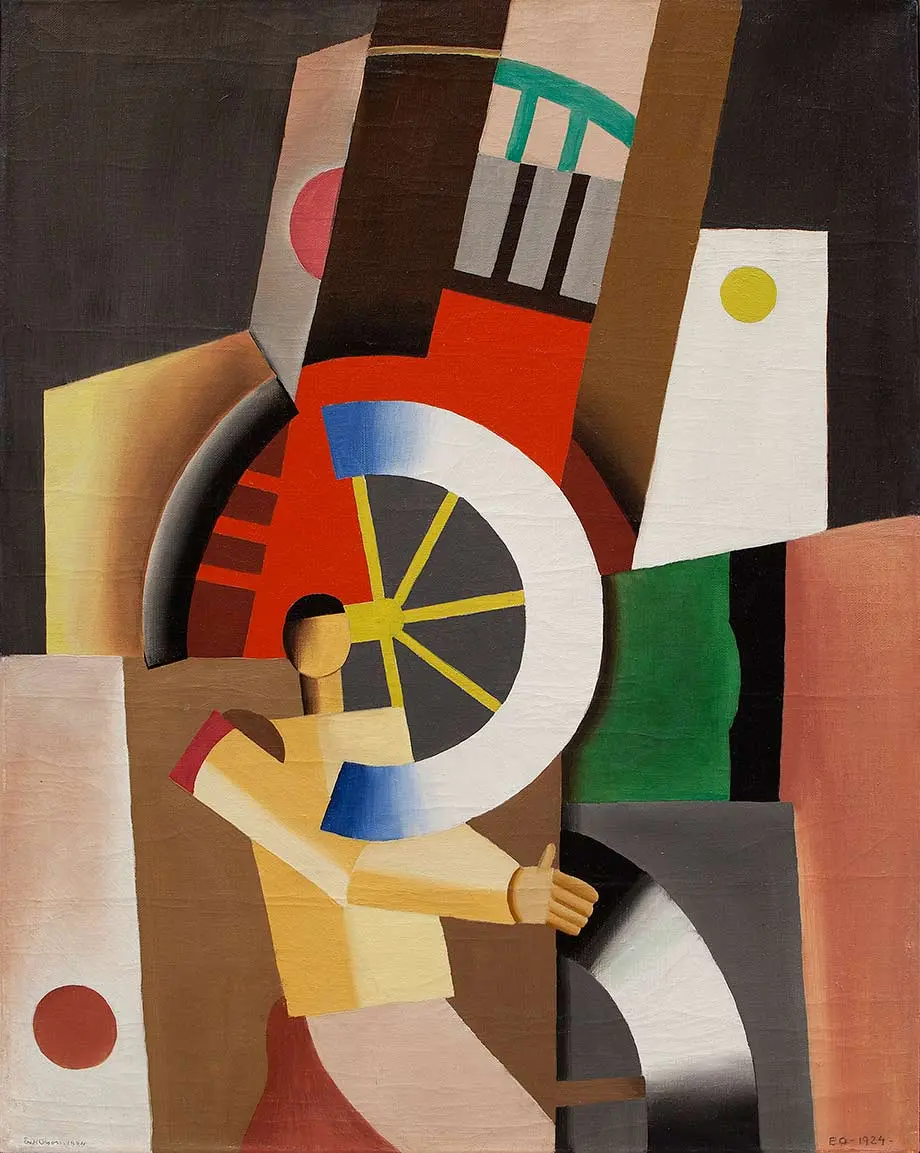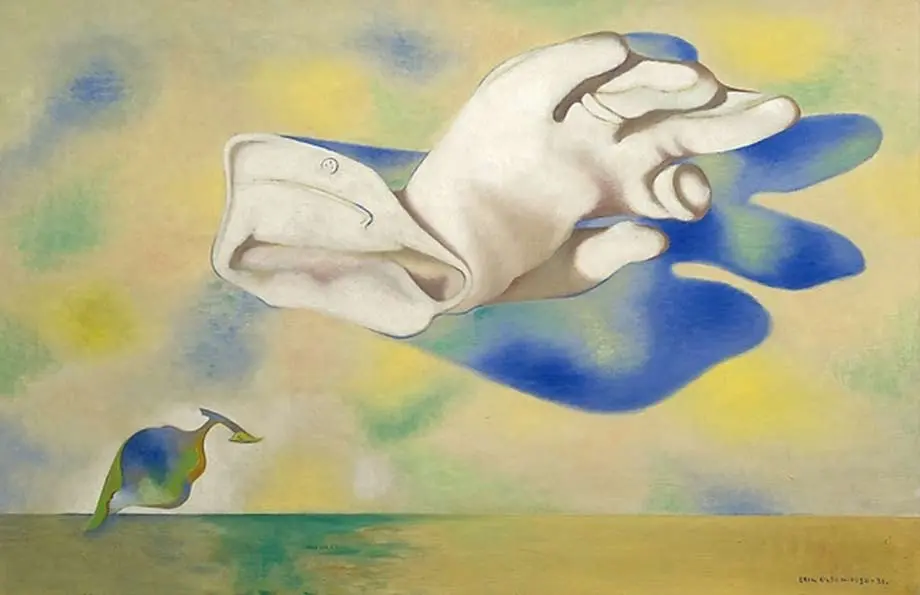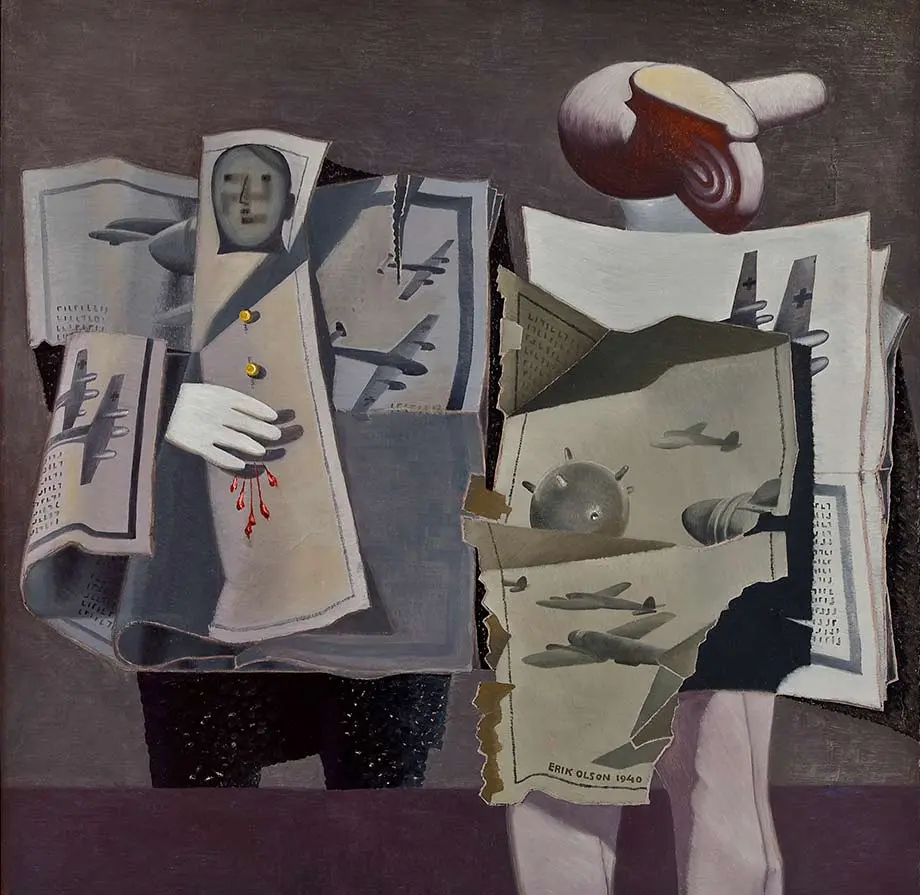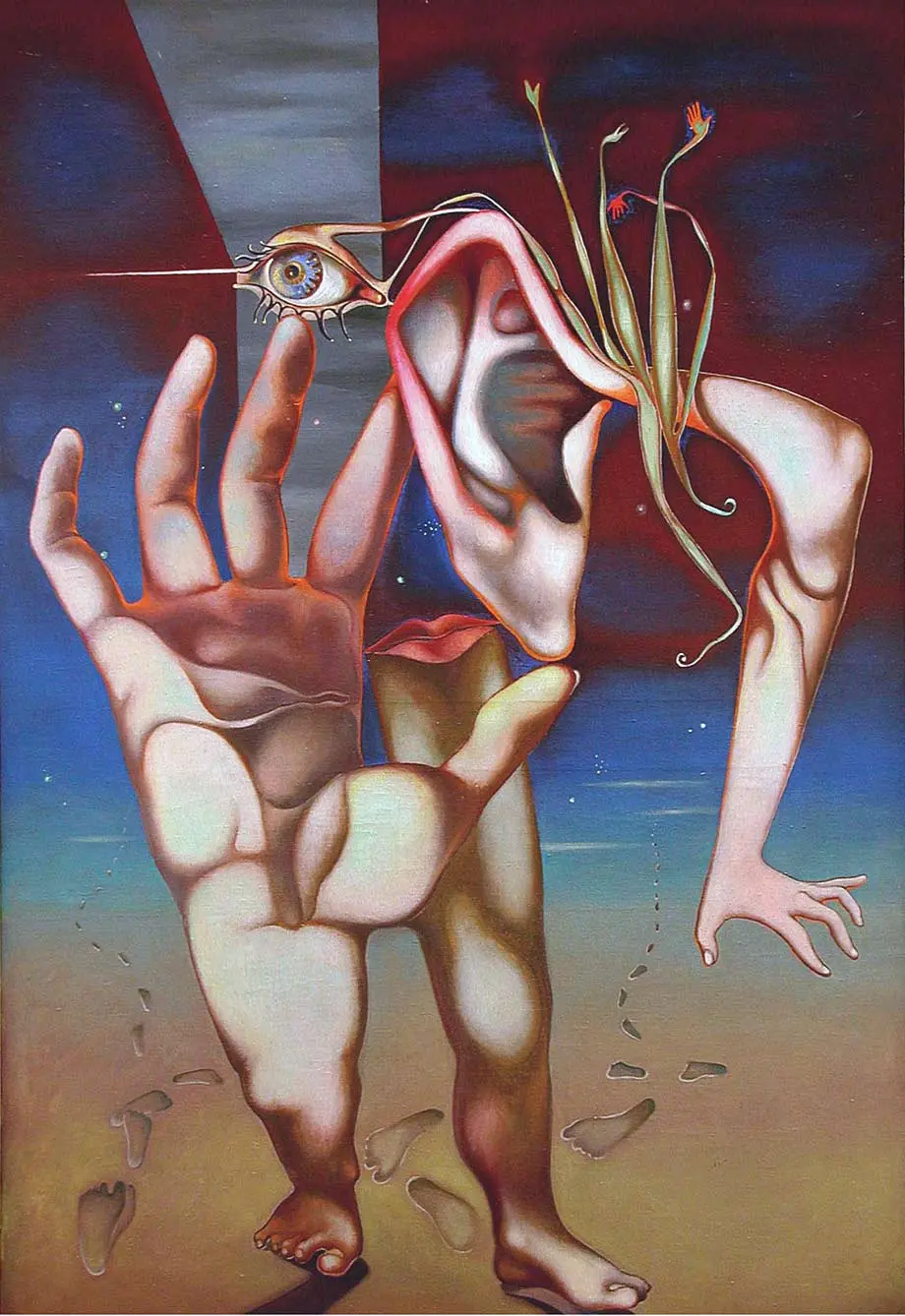Erik Olson
Erik Olson (1901–1986) was one of six artists in the Halmstad Group.
Studies in Paris
Erik Olson was born in Halmstad, his father, a sailor, later became a machinist. E. Olson shared his older brother´s, Axel´s, interest in drawing and painting but Erik also wrote poetry and short stories. Throughout his life he kept a diary with his personal experiences of life and art.
At the age of fourteen Erik paints his first oil painting - a scene from the granite quarry in Söndrum. That year he establishes the group Gnistan (The Spark) with his brother Axel and their cousin Waldemar Lorentzon. The group has their debut in 1919 at an exhibition for amateurs in Halmstad; there the artcollector Egon Östlund discover their work and subsequently communicates contact with the artist Gösta Adrian-Nilsson (GAN). In the beginning of 1924 E. Olson travels to Paris with Lorentzon where they study at Fernand Léger´s Académie Moderne and are schooled in the spirit of French cubism. E. Olson becomes good friends with his fellow students Otto G. Carlsund and Franciska Clausen as they learn from Léger to build their paintings architecturally with clean, bright colours.
The Halmstad group, surrealism
In December of 1924 E. Olson travels to Italy for studies, returning to Halmstad in the spring of 1925 to do his military service. In 1927 he is back in Paris working for Léger. In 1929 he establishes the Halmstad Group with Axel Olson, Waldemar Lorentzon, Sven Jonson, Esaias Thorén and Stellan Mörner. He joins the concretist group Cercle et Carré (Circle and Square) in 1930 and paints Röd dominant (Red Dominant), one of many plane-geometric compositions.

Erik Olson, "Maskinisten", 1924
Same year he takes part in Art Concret, a scandalous exhibition organised by Carlsund. At the end of the thirties Erik paints Handsken är kastad (The Gauntlet is Cast) which is his first surrealist work. He joins the group Abstraction- Création (Abstraction-Creation) in 1931, but tends more and more towards surrealism which flourishes in Paris at this time. E. Olson conveys this trend to the other members of the Halmstad Group.

Erik Olson, "Handsken är kastad", 1930
In Denmark
In 1934 he becomes a member of the surrealist group Gravitation in Paris and paints Sökaren II (The Seeker II) 1935, a surrealistic self portrait. That year E. Olson shows at, and is involved in coordinating, the exhibiton Kubisme=Surrealisme in Copenhagen. In 1935 E. Olson moves from Paris to Copenhagen and joins the Danish surrealists. In 1936 he settles in the fishing village of Taarbaek outside Copenhagen and participates in international surrealist exhibitions in London in 1936 and 1937. The following years he shows at several large international exhibitions among others in Paris 1938. During this period he spends his summers at the coast of Halland.
In 1940 E. Olson paints Dagspressen (Daily Newspaper), a derogatory caricature of Hitler, which is blacklisted by the Gestapo. In ´42 - ´43 Erik Olson starts experimenting with a postimpressionistic style. He moves home to Sweden in 1944 and resides once again in Halmstad. During the 40´s he participates in the Söndrum Colony along with, among others, Sven X:et Erixson, Felix Hatz and the members of the Halmstad Group. During this period he liberates colour and form in his painting, inspired by the coastal landscapes.

Erik Olson, "Dagspressen", 1940
Converts to Catholicism
E. Olson converts to Catholicism in 1959 and comes in contact with the Art Sacré (Sacred Art) movement in Paris which aims to renew sacral art. During the fifties he works in the spirit of the movement and his religious imagery becomes more abstract in monumental formats. A renewal of his surrealism occurs in 1963-64 and he creates a new series of motifs mixing sacred and profane subject matter. During the second half of the sixties he makes a series of erotic paintings. At that time and on into the seventies he also gets subject matter from the unrest of the times: environmental disasters, etc. E. Olson travels to Bretagne, France, at the start of the 70´s and paints mirroring spaces, labyrinths of impossible perspective, and floating cliffs in bright strong colours. He paints a triptych in 1977 for the Vatican Museum in Rome. During the 80´s to a degree he reunites with his religious and mythological imagery. Erik Olson passes away in 1986.

Erik Olson, "Sökaren", 1935
